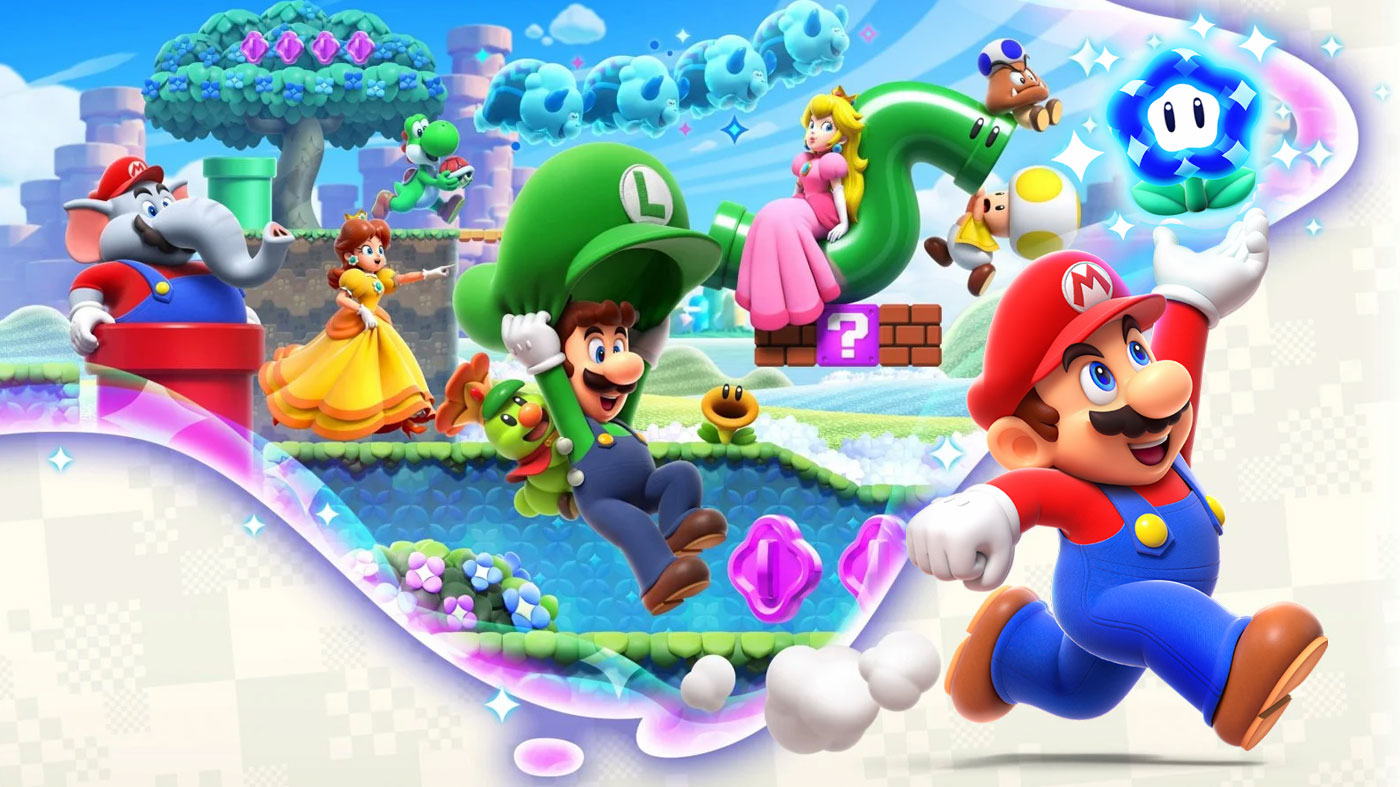If you took the time to look up the definition for “wonder,” you’ll find that it’s a word used to describe a feeling of amazement and admiration caused by something beautiful, remarkable and unfamiliar. It only makes sense, then, that Super Mario Bros. Wonder nails the brief wholeheartedly. It’s the first new traditional side-scrolling Mario game in over a decade and as such it’s airtight evidence that good things come to those who wait. Super Mario Bros. Wonder is an achievement in practically every way you could fathom.
Our adventure begins with Mario and his friends travelling to the Flower Kingdom. It’s a new location that neighbours the Mushroom Kingdom, ruled by Prince Florian and powered by energy from the Wonder Flower. Of course, upon arriving, Bowser appears and steals the source of the power, using its energy to merge himself with the castle and become a flying fortress. The denizens of the Flower Kingdom are trapped inside their homes and Mario must subsequently rescue them. It’s a tried-and-true tale with few surprises.
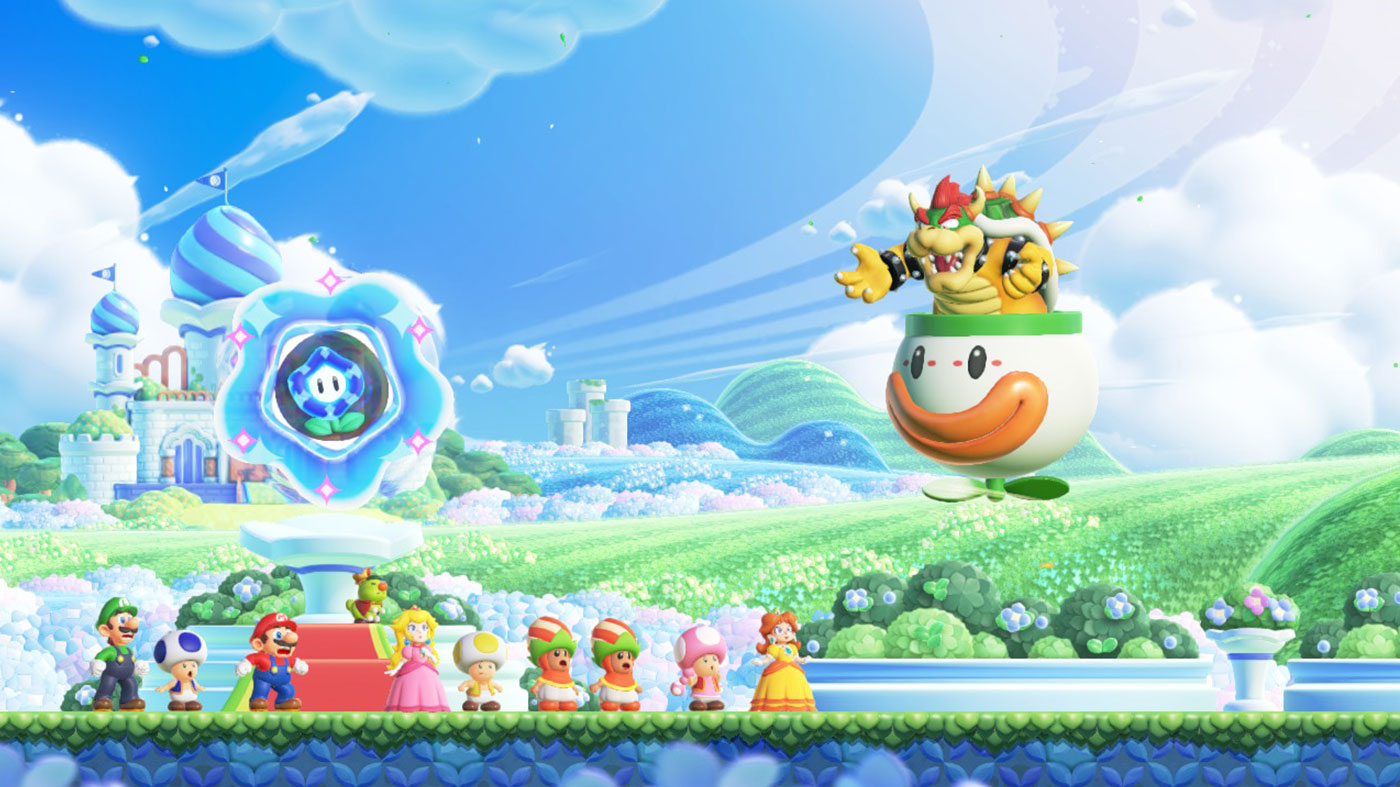
The game follows the typical formula you’d expect from a Mario game of this ilk. Players select their character, jump into a world and clear courses to defeat Bowser. The structure of Mario games has remained unchanged for many years, and I’d argue that’s because it still works just fine. Similarly, the controls are tight and the platforming is equal parts challenging and satisfying. Which is a relief, since so much of Wonder’s success is dependent on these core aspects being adequately achieved.
The most obvious thing about Super Mario Bros. Wonder is that it feels like the start of a new era for Mario. The game is filled to the brim with new enemies and locales that we haven’t seen explored before in a Mario game. While some of the creatures and characters we’ve come to know from Mario’s rich three decades of history still make appearances, the bulk of Wonder is brand new. And it’s this dedication to newness that’s just one of the many reasons why Wonder feels like such a confident and charming reinvention of 2D Mario.
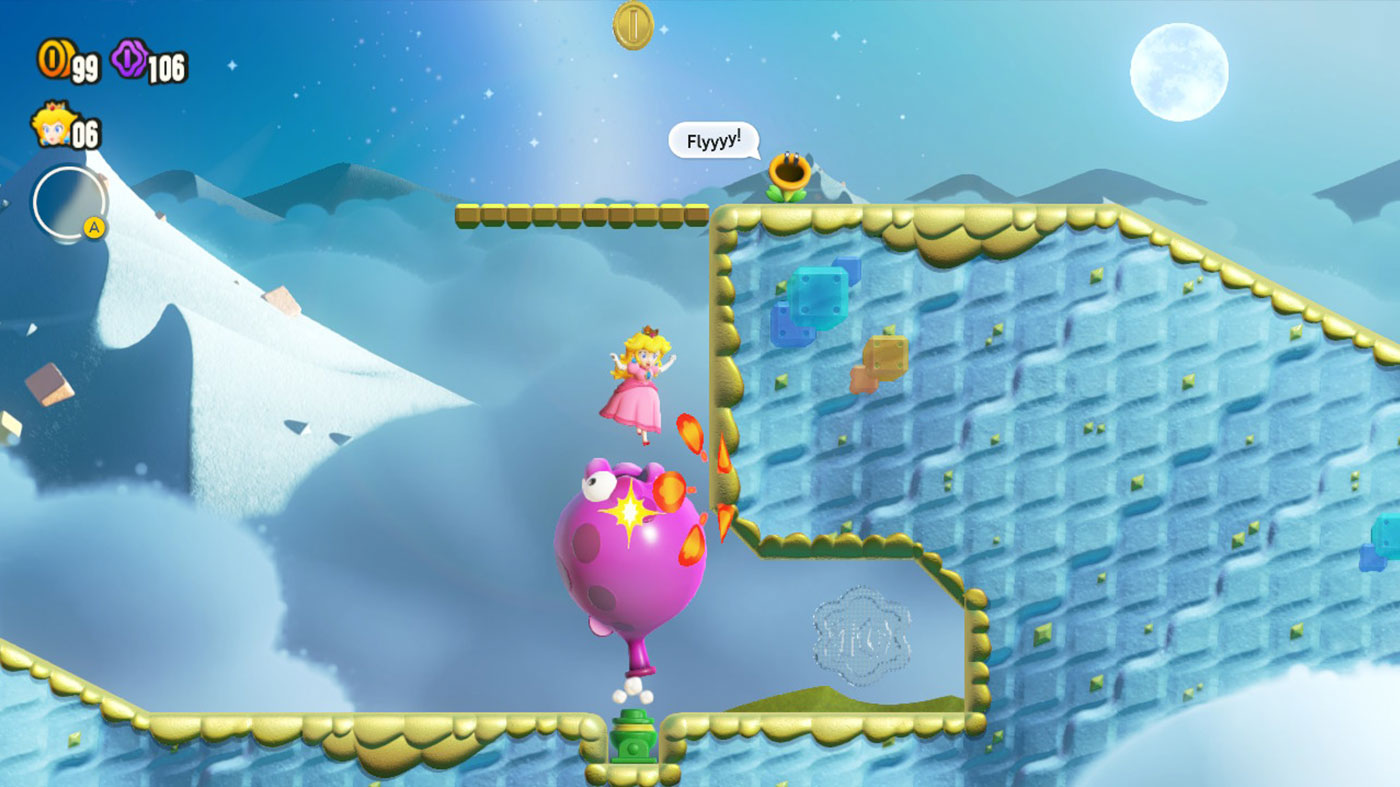
The other side of this reinvention is the Wonder Flowers. They’re a collectible that appears in each level that, when collected, warps the stage or twists the rules of the game to amp up the action. They start off in a rather lowkey manner – some might summon a stampede of enemies to run from. Others are more abstract – changing your perspective of the level or beginning a musical number that your character must participate in with specifically timed jumps.
I’d shown concern in my preview that the Wonder Flowers would get old. That throwing these crazy effects at the player would grow tiresome and tedious as more and more of them stacked up. But, rather impressively, they don’t. The Wonder Flowers are all unique and, while some are reused towards the end of the adventure, the circumstances in which they are reused more than makes up for it. I’d love to be able to talk about more of them, but there’s honestly some genuinely fantastic and creatively rich surprises from beginning to end that it would be remiss of me to spoil them.
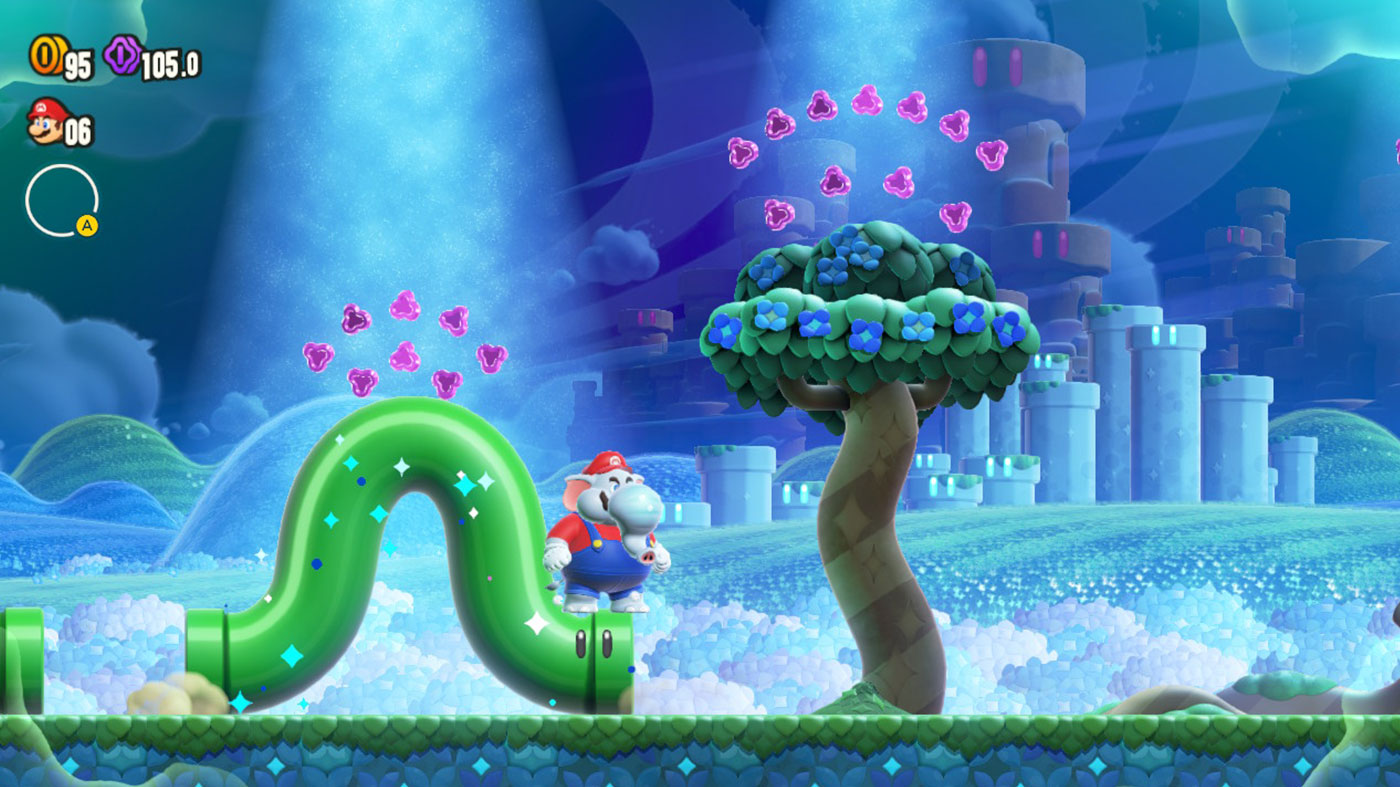
The courses are similarly well thought out, with many of them introducing a new enemy or mechanic that hasn’t appeared in previous levels. It’s remarkable how Wonder manages to keep things fresh, gradually revealing itself to the player course by course in a way that remains interesting and engaging. It’s genuinely impressive achievement, and one that I found refreshing given how quickly I’ve felt compelled by other 2D Mario games to put the controller down and take a break. If it weren’t for basic human needs like sleep and work, I’d have easily been engrossed enough in Wonder to have finished it in a single sitting. It’s just that good.
Such a strong sense of pacing is owed to the fact that there are other level types included in the game too. Besides the main courses, of which there are numerous, other smaller missions with specific objectives are peppered throughout the map. “Break Time” missions are shorter stints with a specific objective. “Search Party” missions have the party exploring a semi-open level for collectibles. “Wiggler Race” is self-explanatory and has the party racing against an eager Wiggler to the end of a course. These are all uniquely created courses too, and do a great job of breaking things up, especially during longer sessions.
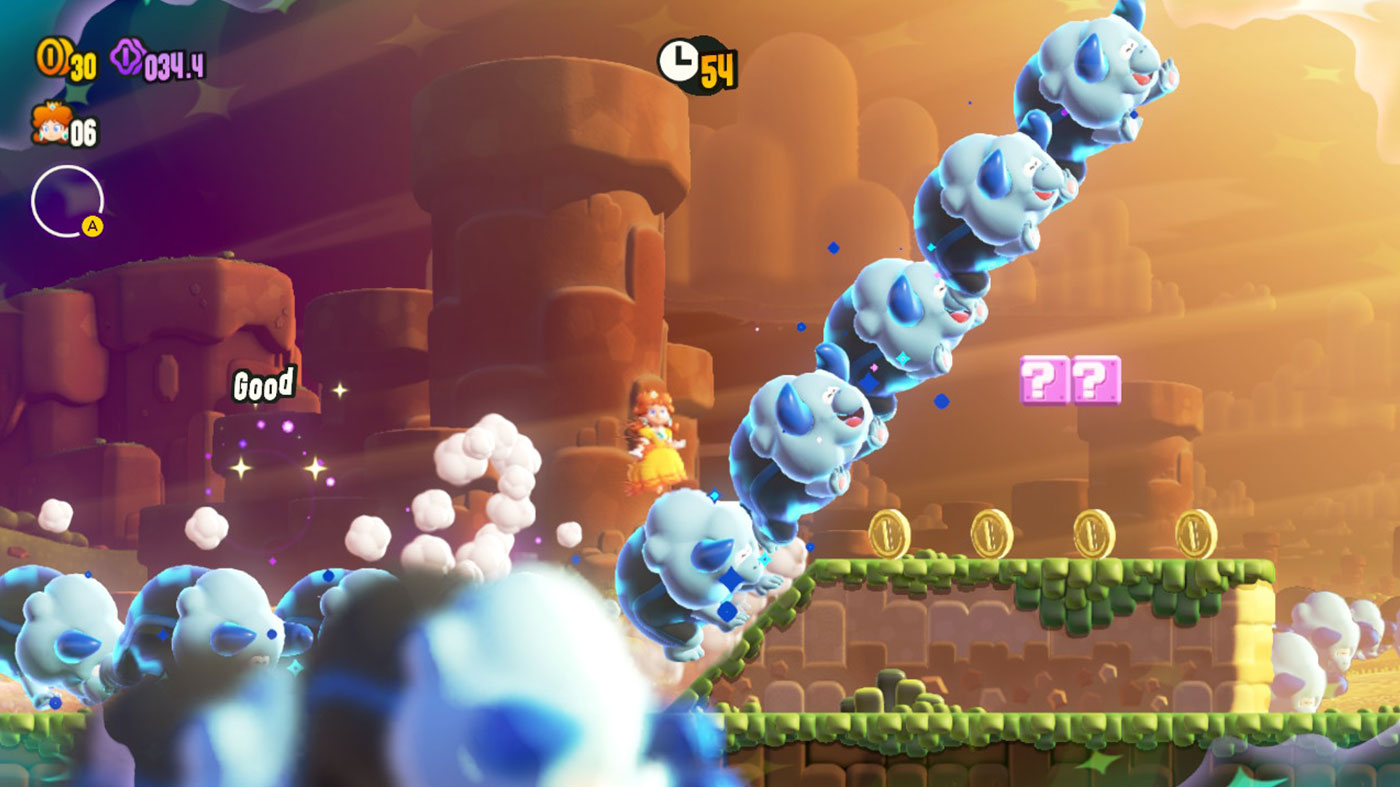
Super Mario Bros. Wonder also introduces three new power-ups to the fold, providing some great quirks that complement the platforming superbly. The Elephant is the simplest, allowing your character to attack sideways with their trunk or transport water from one area to another. The Bubble Flower allows you to blow bubbles to encapsulate enemies but can be used by savvier players to create bounceable platforms to jump off of. Finally, the Drill Mushroom turns your head into a hitbox, enhances their ground pounds and allows you to burrow and traverse across ground or ceiling like the spider ball from Metroid.
GET IT FROM AMAZON FOR $69 WITH FREE SHIPPING
These power-ups join the Fire Flower to offer up a set of abilities that often have a multi-faceted benefit to the player. They’re all good at defeating enemies, obviously, but so many of the new power-ups create opportunities for players to traverse courses without the need for flashy acrobatics or stage-specific mechanics. They’re incredibly clever additions to the line-up and do great work in giving players freedom in how they approach the courses in the game.
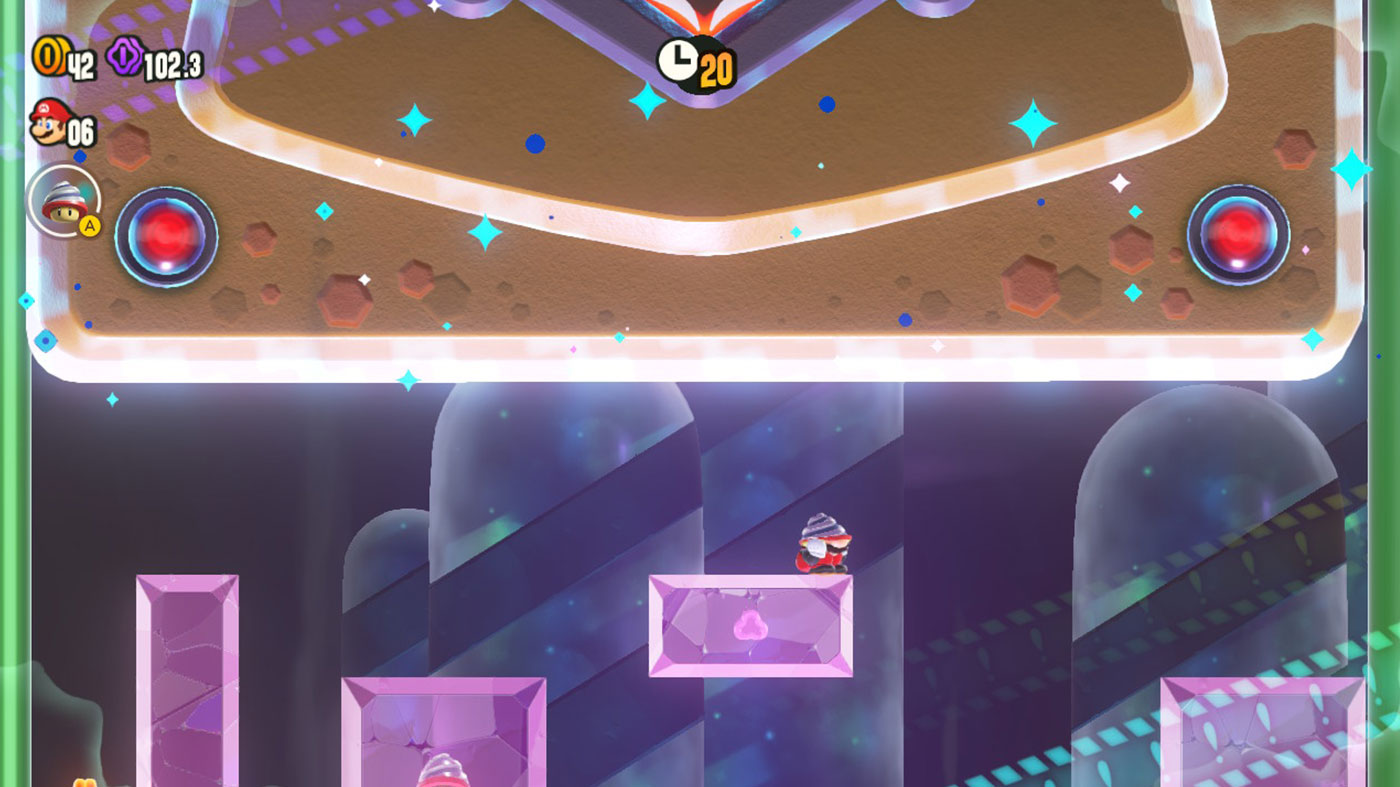
And that’s before I even talk about badges. They’re awarded to players largely by completing badge trials, which are another mission type strewn throughout the map. They buff the party in both active and passive ways, selectable before a course starts or between deaths. Some increase the height of your jump, while others might allow you to wall jump on the same wall twice to reach greater heights. One might increase the drop rate for coins, while another gives you a grappling hook-like ability. They’re simple additions that, once again, allows players to engage with the platforming in Wonder the way they want to without compromising the overall design.
Mario games have historically been fairly easy. Wonder does good work in remedying this complaint, but in a way that doesn’t exclude anyone. For the most part, the courses are fun and challenging with a naturally progressing difficulty curve that never feels unfair. But if you stray from the main path, mainly through hidden exits, you’ll come face to face with optional courses that have been tuned to be pretty difficult.
And I mean difficult. Two of them easily took around half an hour each to complete properly and one of those would’ve taken even longer if it weren’t for me playing with a friend and having the revives that multiplayer provides. It’s kind of refreshing to see something so challenging in a Mario game, even if it only makes up a small percentage of the total courses and is completely optional. If you’re somebody who enjoyed watching those challenging and gruelling courses made by players in Super Mario Maker 2, you’re going to love finding the right sense of flow to get through these tougher courses in Super Mario Bros. Wonder.
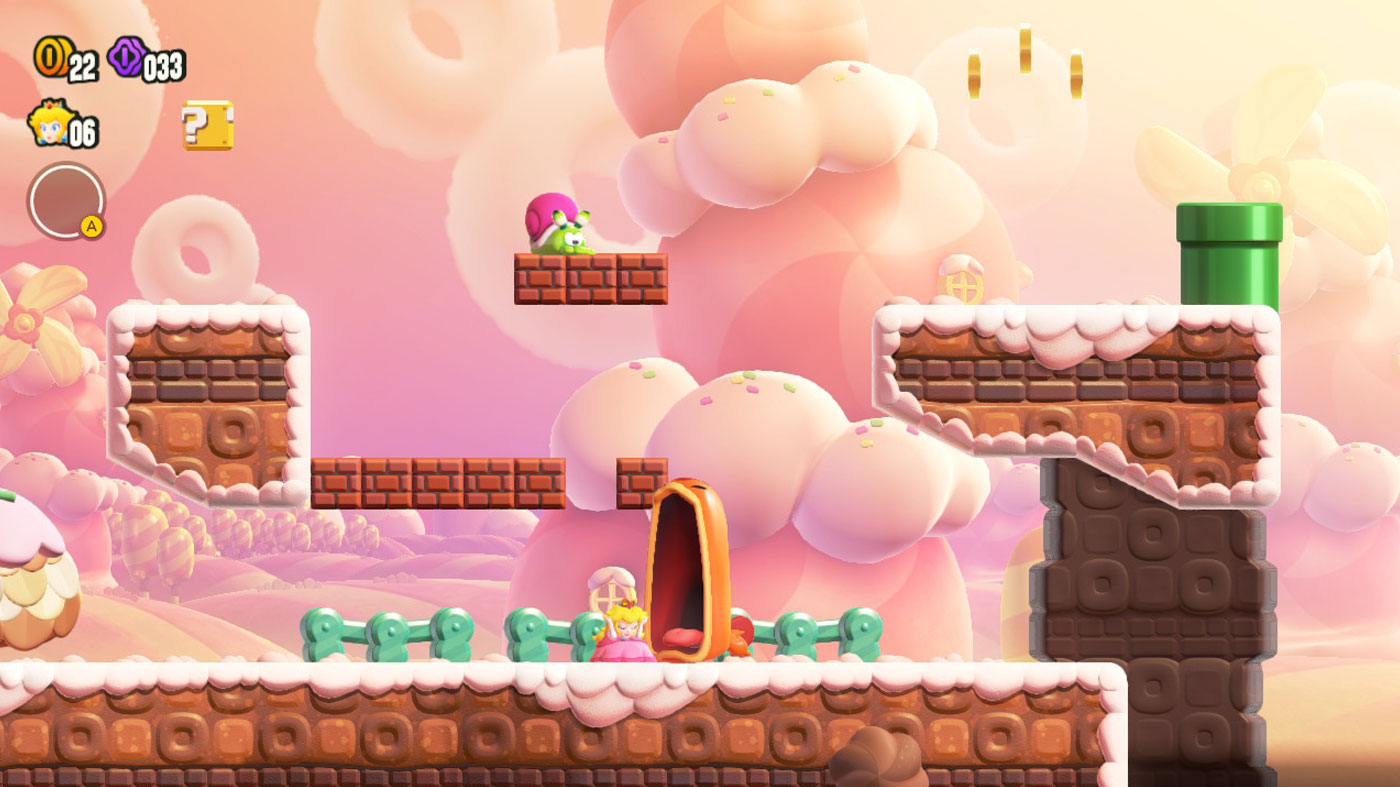
Unfortunately, my other major gripe with the 2D Mario games remains – there’s not a lot of variety to the boss encounters and many of them are simply too easy. I acknowledge this is a game targeting a wide audience, but these do feel like they’re over a bit too quickly. Still, they make good use of the Wonder Power concept to offer memorable battles, and they’re only a minor blemish on an otherwise stellar package.
While local multiplayer is supported, the way Wonder handles online multiplayer is also quite novel. When you’re connected, you’ll see the silhouettes of other players playing on the same course. In courses where you might be stuck or looking for something, these ghostly hints can often help point you in the right direction. It feels like Dark Souls, to a certain extent, and really helps make the world feel so much bigger than it is and was helpful in finding a hidden object I was unable to find previously.
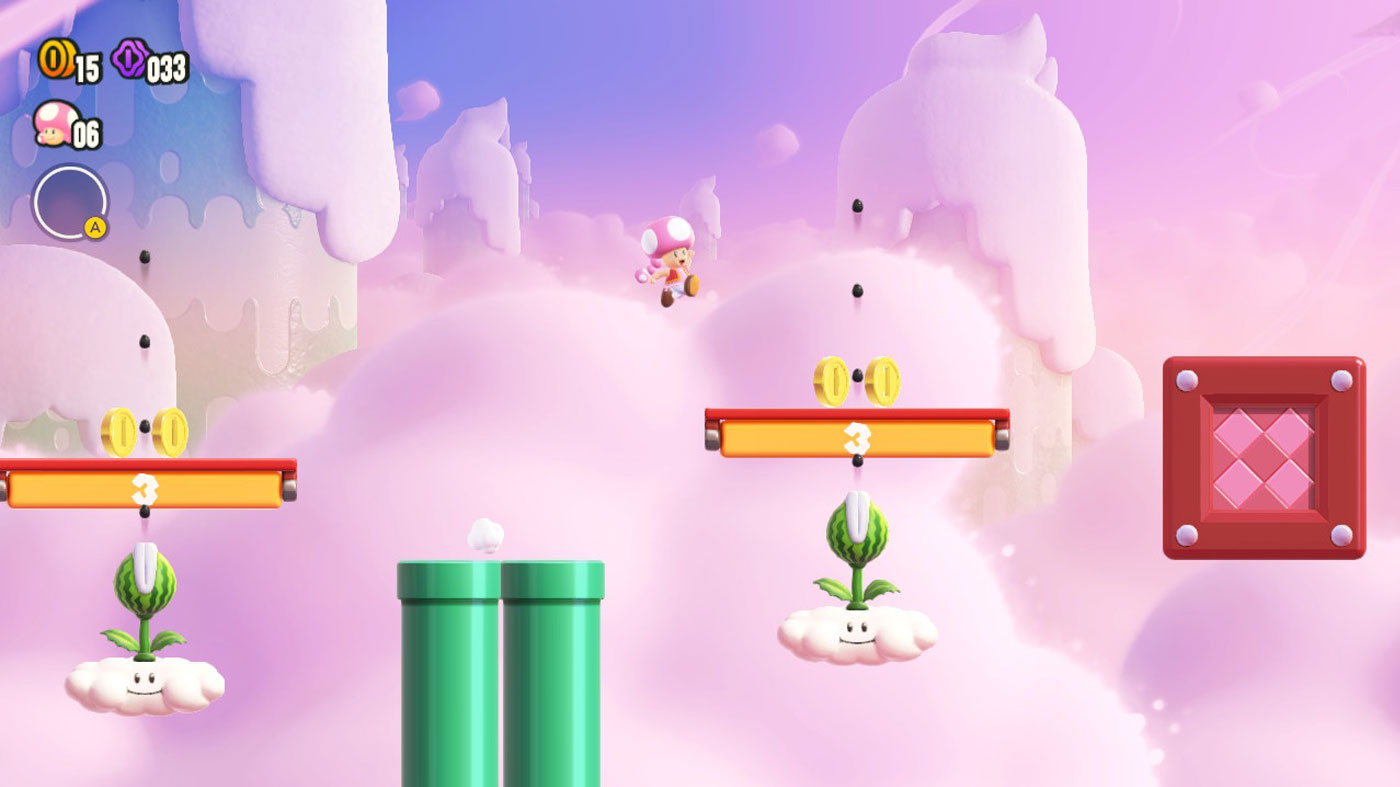
You can also erect standees of your character wherever you want, creating checkpoints that other players can use online during more difficult challenges. Is Super Mario Bros. Wonder a strand game, then? Not quite. But the standees can be used to great effect to provide hints to other players. A tub of unassuming goo was in one level and somebody planted their Luigi standee in a post of him diving. Of course, there was something good in there, which was a nice touch. I would’ve done it anyway, but it’s a cool system that, once again, mimics Dark Souls’ notes system and works oddly well with a 2D Mario game.
As the credits rolled on Super Mario Bros. Wonder, it was fun to reflect on just how much it has to offer. While everyone’s playthrough will inevitably be different, it’s easily the biggest 2D Mario game that Nintendo has ever created. Even better, it’s the most compelling. It’s filled to the brim with delightfully realised ideas from beginning to end. And it’s more than likely not over when you’re done either – so many secrets are hidden off the main path that you’ll no doubt want to go back and uncover.
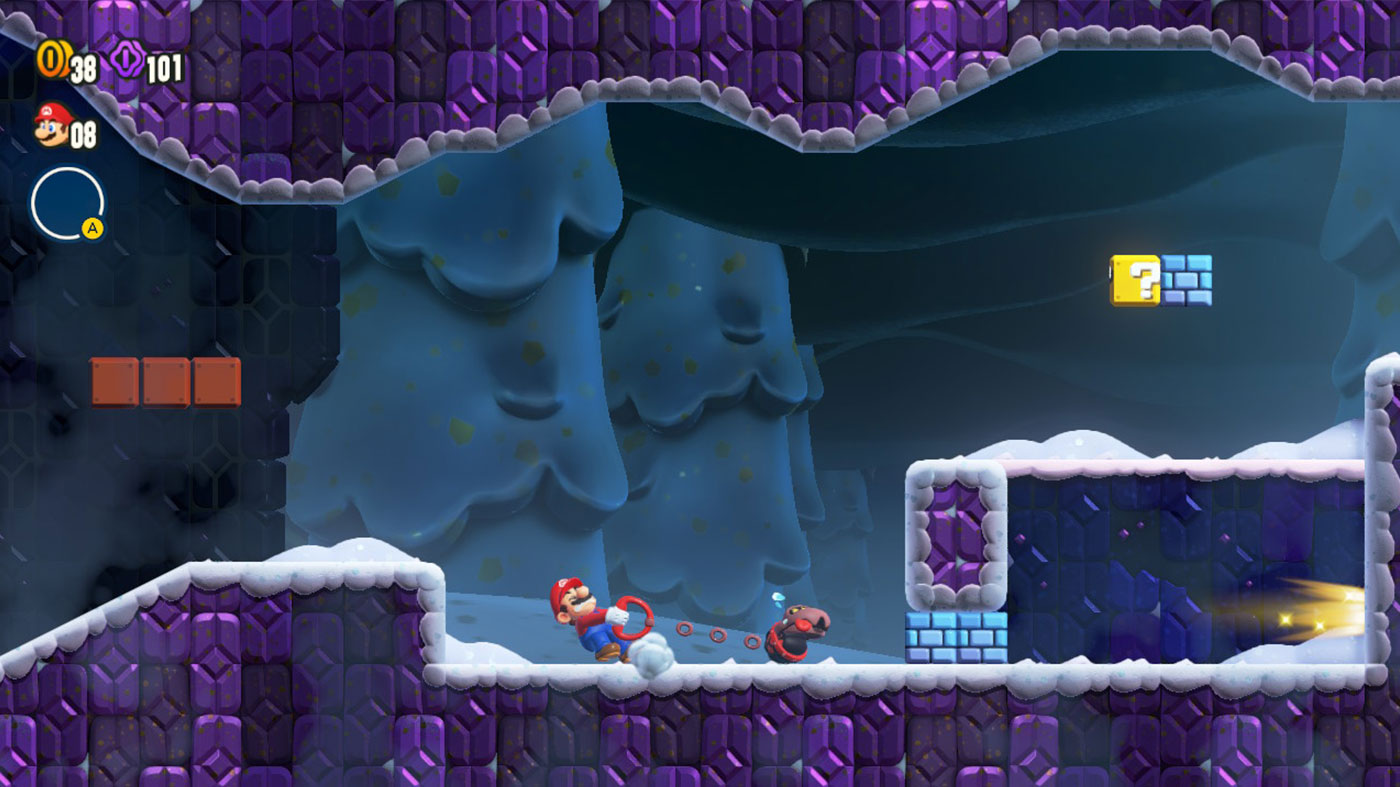
From a presentation standpoint, it goes without saying that Wonder looks phenomenal. It’s vibrant, the colours pop and everything that appears on screen just oozes personality and expression. It’s really one of the best-looking Mario games, and a huge step above the very flat and generic looking art direction seen in the New Super Mario games. All in all, it’s a visually stunning game and while it’s best to keep some of the best-looking courses a surprise, it’s easily up there for one of the best looking and performing Switch titles.



